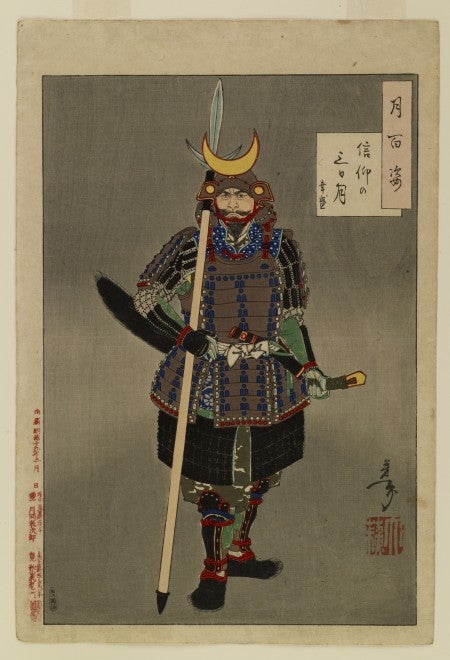Shtf Will Swords Become Useful Again
Swords for SHTF? A Skeptical Perspective from a Sword Arts Practitioner
04.02.14

As a black belt in Kendo and someone with a long-standing interest in Japanese swords, I was interested to read fellow AllOutdoor.com contributor Major Pandemic's review of the Paul Chen budget tactical katanas. As always, MP's review was excellent and thorough, but I have to take issue with a few parts of it, specifically regarding the suitability of the sword as a SHTF weapon.
For those of you who are too busy to read the whole thing, here's the short version of what I'm going to say: if the S meets the F and the ammo runs out, then Cold Steel boar spear is by far a better melee weapon than even the most fantastic sword. Seriously, I'd take just about any spear over even a Howard Clark L6 bainite katana on any day of the week, and I say this as someone who has a black belt in a sword art and who knows that the Howard Clark L6 is the epitome of indestructible zombie slaying awesomeness. No, the katana is a one-on-one dueling weapon optimally designed for use in unarmored combat, and it rose to prominence during a specific, very peaceful period in Japan's history. It is not an infantry weapon, and it is definitely not suitable for a SHTF situation.
Katana: Context and History
In the wars that led up to the long peace of Japan's Edo period (1603-1867), the signature weapon of the samurai was not the sword but the bow. The bow was direct analog to the modern designated marksman rifle, and the sword was used as a fallback side-arm, like a pistol. In between the two was the spear, which was the main close-quarters melee weapon of the period. You might say that if the bow is a DMR and the sword is a pistol, then the spear was either a short-barreld AR or something the H&K MP5.
Most samurai of this period would have used their sword mainly either in test cutting exercises on enemy corpses, or in a ritual suicide situation — either their own suicide or someone else's. (In hari kari, the suicide victim would often make a symbolic, shallow cut across their own abdomen with the short sword, and their friend standing behind them would do the actual killing by lopping off their head with the katana. If you wanted to go out like a real man, you'd jam that sucker up into your own guts and work it around a bit with both eyes open, staring straight ahead, but few actually did that.)
If you weren't using a bow, and you were an infantryman, then your primary weapon was a spear. Indeed, the spear was the primary weapon of most of the world's infantry from back before The Illiad, which features the spear prominently, up through the rise of the firearm. The Romans did use the shield and short sword combo to great effect on the battlefield, but this involved a ton of group disciple and specialized training in formation; you won't be replicating this in a SHTF situation, or ever.
In Japan, the the katana as a sidearm evolved from a much longer sword that was used from horseback, hence the curved blade, which, because it makes for a better slashing weapon, is common to calvary swords from antiquity through the modern era. But the katana didn't really come into its own as the samurai weapon until the Edo period, which was over 250 years of mostly peace and tranquility. With war now off the table as an option for proving one's military prowess, the samurai class took up dueling with a vengeance. And the preferred weapon for a duel between two samurai was the katana.
In a dueling context, the katana was used against an unarmored opponent — or, in some cases, multiple unarmored opponents if you're really feeling your oats and have decided to come down from your mountain training retreat and challenge an entire dojo. Again, if you were facing an armored opponent in an actual battle situation, then you really wanted a spear, which not only gave you a reach advantage, but would also be far more effective than the katana at piercing the opponent's armor.
When it comes to melee weapons, the importance of reach cannot be overstated. Of course, in Kendo it's considered a good thing to fight periodically with a shorter than normal sword in order to improve your fighting spirit and cultivate fearlessness, but in melee situations where your primary concern is with actually avoiding death (vs. staring it coldly in the eye without fear like a true samurai), then longer is better.
All of this is why, despite my training, I'd pack a spear to the apocalypse and not a sword. Like the crossbow, the sword makes for great survival TV, but its only real role in a SHTF scenario is as the trophy that the spear wielder pulled off the corpse of his inadequately armed opponent.
forehandproff1944.blogspot.com
Source: https://www.alloutdoor.com/2014/04/02/swords-shtf-skeptical-perspective-sword-arts-practitioner/
0 Response to "Shtf Will Swords Become Useful Again"
Post a Comment